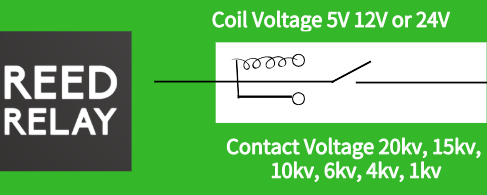Introduction to Reed Sensors
Reed sensors, also known as reed switches, are magnetic sensors that consist of a hermetically sealed glass capsule containing two ferromagnetic blades (reeds) that can be electrically contacted. These sensors are widely used in various applications due to their simplicity, durability, and reliability.
How Reed Sensors Work
The operation of a reed sensor is based on the principle of magnetic attraction. Inside the sealed glass envelope, there are two normally open or normally closed contacts made of ferromagnetic material. When a magnet comes close to the sensor, the magnetic field causes the reeds to magnetize and attract each other, resulting in the closure of the contacts if they were open, or opening them if they were closed. This change in the state of the contacts can be used to trigger an electrical circuit or to send a signal in the system.
The glass envelope serves several purposes: it protects the reeds from environmental factors such as dust, moisture, and corrosive elements; it ensures that the contacts remain in a constant state until acted upon by a magnetic field; and it allows the sensor to function over a wide temperature range.
Characteristics of Reed Sensors
- Reliability: Because reed sensors are sealed and contain no moving parts other than the reeds themselves, they have a very long lifespan and are resistant to wear and tear.
- Compact Size: Reed sensors are small and can be easily integrated into compact designs.
- Low Power Consumption: They require minimal power to operate, making them suitable for battery-operated devices.
- Environmental Resistance: Being sealed, they are protected against contaminants, which makes them useful in harsh environments.
- Variety of Configurations: Reed sensors come in different configurations, including normally open (NO), normally closed (NC), and latching types, depending on the application requirements.
Common Types of Reed Sensors
- Normally Open (NO): The contacts are open in the absence of a magnetic field and close when a magnetic field is applied.
- Normally Closed (NC): The contacts are closed in the absence of a magnetic field and open when a magnetic field is applied.
- Latching Reed Switches: These switches maintain their state after the magnetic field is removed and require a second magnetic pulse to switch back.
Advantages of Reed Sensors
- Simplicity: Reed sensors are straightforward to install and integrate into existing systems.
- Cost-Effective: They offer a cost-effective solution for many sensing needs.
- Versatility: Reed sensors can be used in a variety of applications across multiple industries.
Applications of Reed Sensors
Reed sensors find use in numerous applications across different sectors:
- Security Systems: Used in burglar alarms to detect unauthorized access through doors and windows.
- Industrial Automation: Utilized in proximity sensing, position detection, and safety interlocks.
- Consumer Electronics: Integrated into appliances for monitoring functions like door openings in refrigerators or the state of battery compartments in toys.
- Transportation: Employed in vehicles for applications such as fuel gauge sending units, door ajar sensors, and seatbelt reminders.
- Medical Devices: Used in diagnostic equipment and patient monitoring systems to detect the presence or absence of components.
